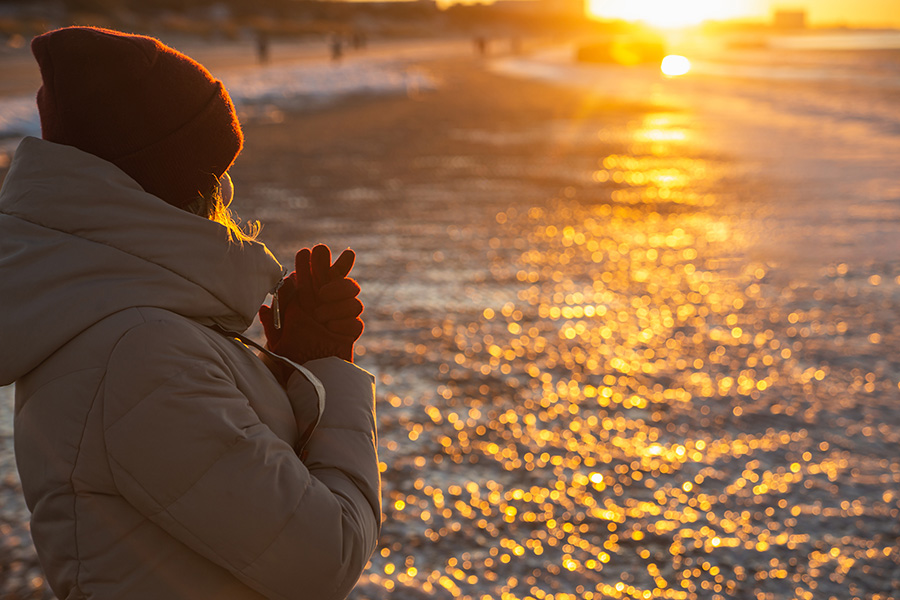It’s so chilly out some days that it feels like winter must already be here. However, the official first day of winter falls on the same date every year: December 21, which is a Thursday this year.
The first day of winter is also known as the Winter Solstice, the shortest day and longest night of the year. This year, the sun on December 21 is estimated to rise at 7:02 AM and set at 4:31 PM at Eastern Standard Time in the Northern Hemisphere. From that day on, the days will get longer and the nights shorter, until the longest day of next year on the Summer Solstice: Thursday, June 20, 2024.

The solstices are caused by the tilt of the Northern Hemisphere towards the sun: the winter solstice is the day that Earth is tilted farthest away from the sun (conversely, nearest on the summer solstice), resulting in the least daylight of the year.
Some people get the winter and summer solstices confused with the autumn and spring equinoxes; however, the equinoxes are the two days in the year that have equal amounts of daylight and nighttime.
People all over the world have been recognizing the Winter Solstice for millennia as marking either the change in seasons or a midpoint in the season. For instance, several civilizations’ most famous stone structures are theorized to have been built for this purpose, and there are many ancient festivals from distinct cultures intended to bring joy and celebration to the darkest time of the year. Like many other winter celebrations, they center around light and warmth.

Because the Winter Solstice is not a federal holiday, you can expect businesses, transportation, and government buildings to be operating on normal hours. In this day and age, celebrations in honor of the Winter Solstice specifically are not widely held, but in the cold and dark of winter, a party with friends and loved ones wouldn’t go amiss.
If you have any questions or concerns, always feel free to contact us at info@gravityintprog.com. Stay safe and healthy!






